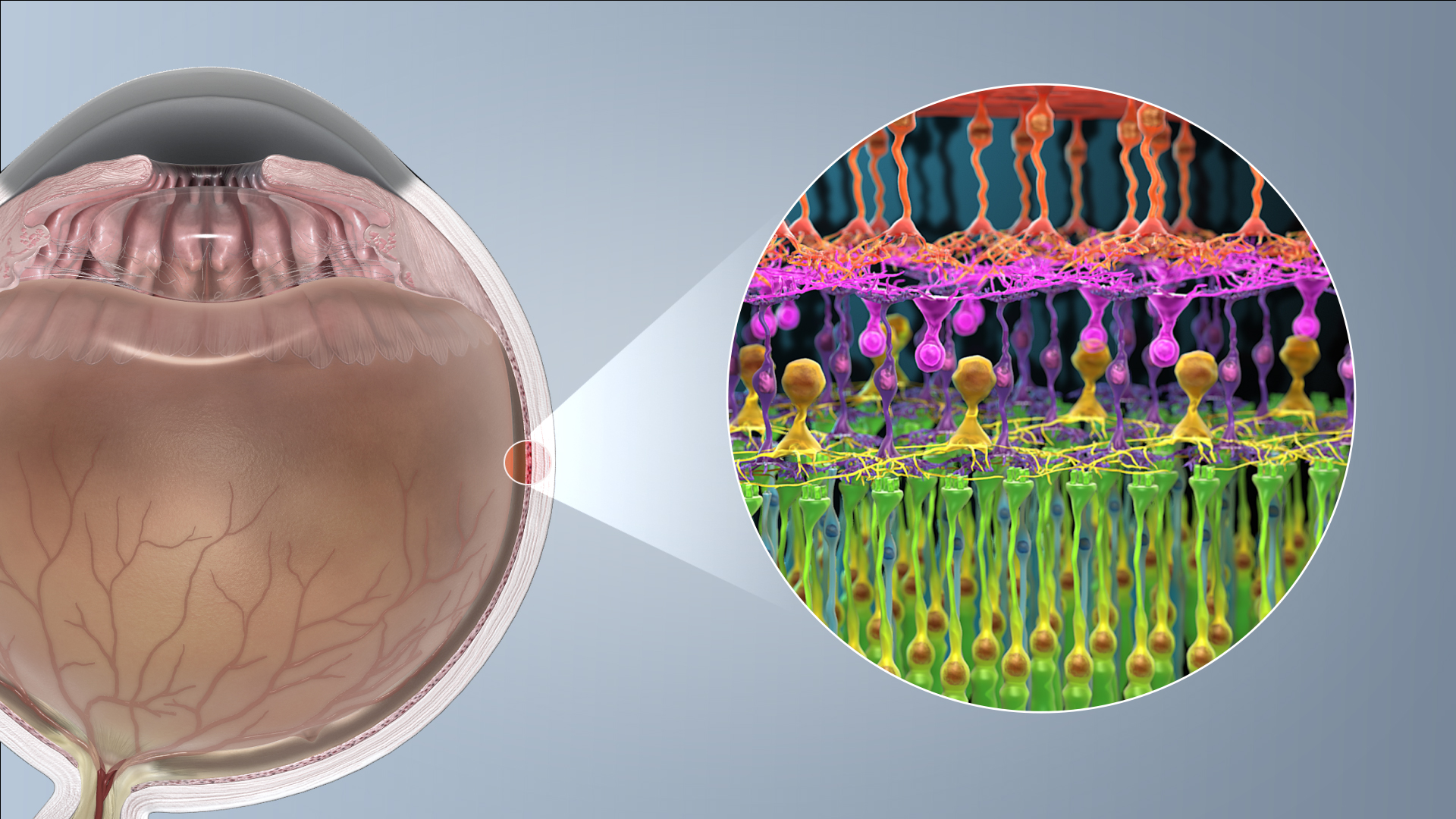 |
Lower photoreceptor outer densities and spacing found in patients with multiple sclerosis, suggest that adaptive optics retinal imaging has the potential to become a sensitive marker for this disease. Photo: http://www.scientificanimations.com/wiki-images. Click image to enlarge. |
A recently published study in Ophthalmology Science set out to determine if patients with multiple sclerosis have outer retinal changes. The small study, conducted in the UK, determined that this inflammatory, neurodegenerative disease was associated with decreased cone densities. Future longitudinal studies, according to the study authors, will help shed light on whether this could be used as a means to detect and monitor the development and progression of the condition.
This single-center, cross-sectional study included 16 patients with multiple sclerosis and 25 controls; participants were predominantly Caucasian. Of the 32 eyes from the multiple sclerosis patients, 12 had a known history of optic neuritis. There were no reports of optic neuritis among controls.
Volumetric spectral domain OCT scans of the macula and a circular scan around the optic nerve head were gathered by the research team. They also captured adaptive optics images at 0º (centered on the foveola), 2 º, 4º and 6º temporal to the fovea. The thickness of the different retinal layers in the macula and around the optic nerve head was calculated, and the researchers also evaluated changes in cone photoreceptors.
Data showed significant thinning of the inner retina as well as a thickening of the outer retina in the eyes with a history of optic neuritis, according to the study authors. No changes were observed in retinal layers without optic neuritis.
However, the researchers reported the detection of regional differences in the peripapillary retinal nerve fiber layer. The analysis also demonstrated a significantly lower cone outer-segment density at all eccentricities among all patients compared to control eyes, independent of optic neuritis history.
“This is the first study to show lower photoreceptor outer densities and spacing in patients with multiple sclerosis, suggesting that adaptive optics retinal imaging has the potential to become a sensitive marker for multiple sclerosis,” the study authors noted in their paper. “Whether the observed changes in this cross-sectional study can be translated to a larger and more ethnically diverse population will need to be seen.”
McIlwaine G, Csincsik L, Coey R, et al. Reduced cone density is associated with multiple sclerosis. Ophthalmol Sci. April 12, 2023. [Epub ahead of print]. |


